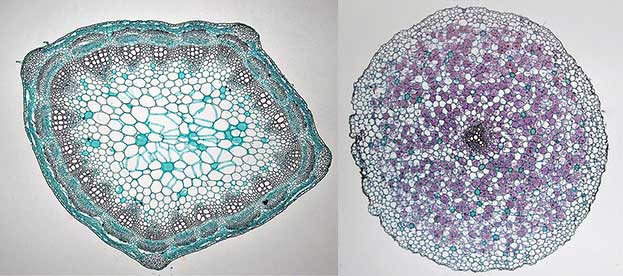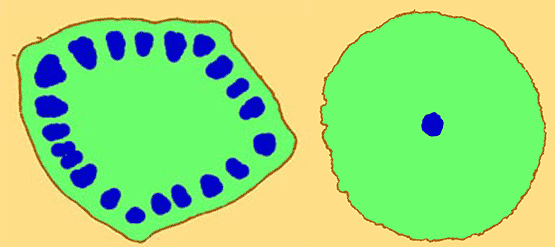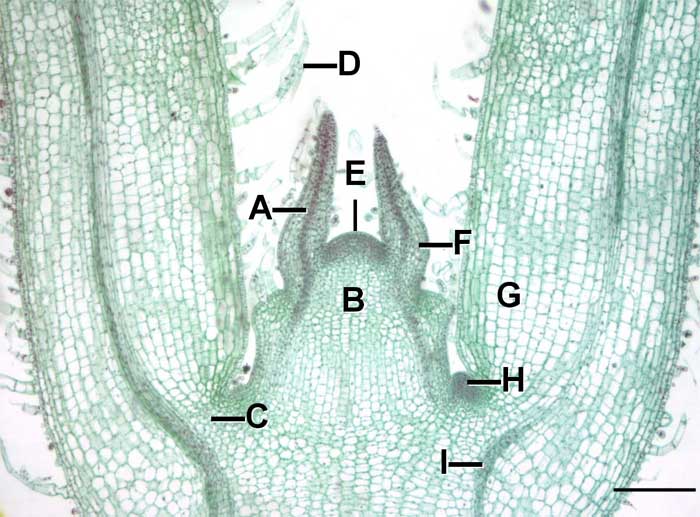2.1 Development of a plant
The apical meristem produces new cells by cell division. These small squat cells divide and expand in size. They then differentiate into all the various cell types of the plant.
The great variety of cell types in a plant can be divided into three broad tissue systems: the dermal, vascular and ground tissue systems.
2.1.1 Tissue systems




2.1.2 Meristems and growth

Media Attributions
- Figure 2.1.a. Tissue systems in a leaf (micrograph) © BlueRidgeKitties is licensed under a CC BY-NC-SA (Attribution NonCommercial ShareAlike) license
- Figure 2.1.b. Tissue systems in a leaf (diagram) © Sean Bellairs is licensed under a CC BY-SA (Attribution ShareAlike) license
- Figure 2.1.c. Herbaceous Dicot Stem: Younger Trifolium (micrograph) © Berkshire Community College Bioscience Image Library is licensed under a Public Domain license
- Figure 2.1.d. Herbaceous Dicot Stem: Younger Trifolium (diagram) © Sean Bellairs is licensed under a CC BY-SA (Attribution ShareAlike) license
- Figure 2.2. Apical meristem of Coleus. © Jon Houseman and Matthew Ford is licensed under a CC BY-SA (Attribution ShareAlike) license

